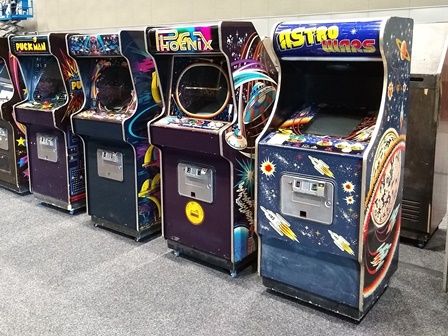
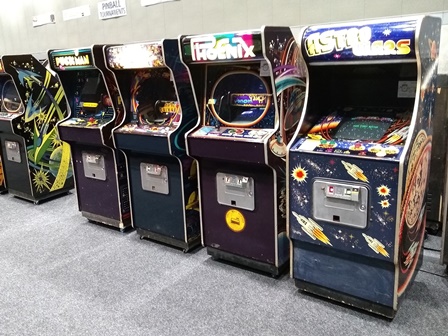



|
The game failed on show day 1 with no picture and playing blind. Inspection found chatter noise coming from the chassis and no HV. The monitor chassis was swapped out with one borrowed from the dead Sea Scare to get Astro Wars going again and the game made it almost to the end of the show before the game PCB failed with no boot.
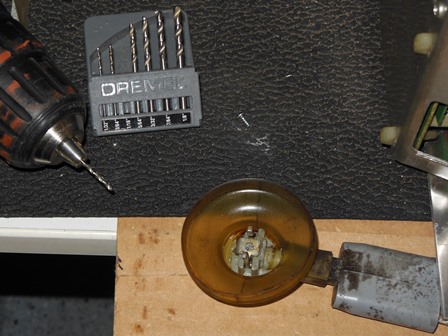

|
The broken CRT clip in the HV cup was first repaired using a Dremel and a cut down wood screw. On the bench the chassis had the same chatter and no HV. The B+ supply measured a stable and correct 128.1VDC. Swapping out the TDA2593 line sync drive IC had no effect.
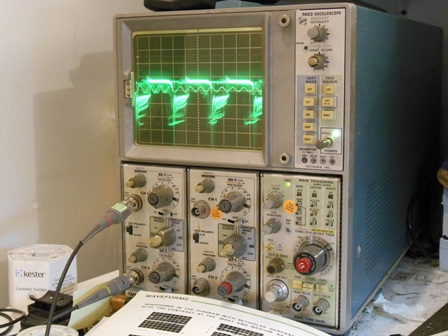
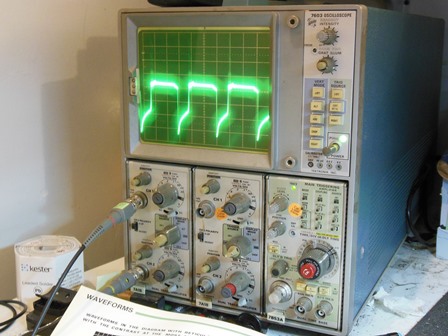
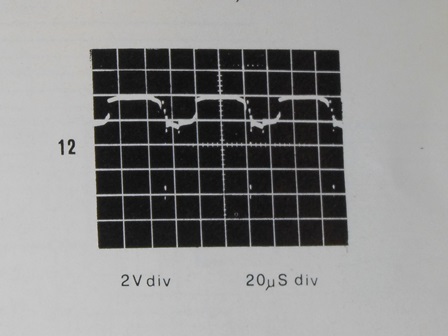
|
Checking the base drive TP12 of TR17 (BU208A) the Horizontal Output Transistor (HOT) on the scope found a horrible mess. Removing and checking TR17 using a back-to-back diode test found no issue. TR17 was fitted back into its socket but leaving the can (collector) isolated to allow the base drive at TP12 to be checked without the LOPT connected. The signal looked clean and similar to the reference diagram in the manual. I suspected the LOPT was bad.
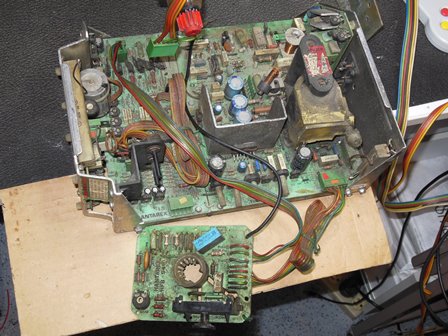
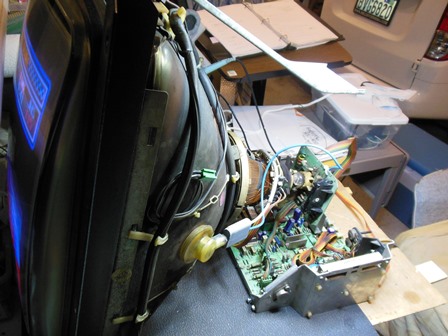
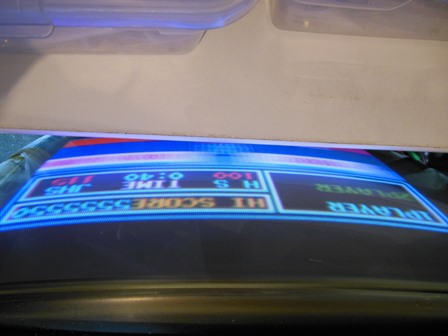
|
There were no reproduction LOPTs available for the MTC-900 chassis so an unknown one was removed from a spare chassis to try, reusing the bleeder assembly from the Astro Wars chassis. First power on yielded HV and good picture. The chassis ran on the bench with no further issues and was installed back into the cabinet.

|
The game PCB wouldn't boot or run reliably and wiggling the game PCB power connector caused visible picture brightness changes and crashing. The game PCB power plug pins had been cleaned several times and the cabinet power socket pins had already been replaced. The game PCB power plug was replaced to finally resolve the power stability issue.
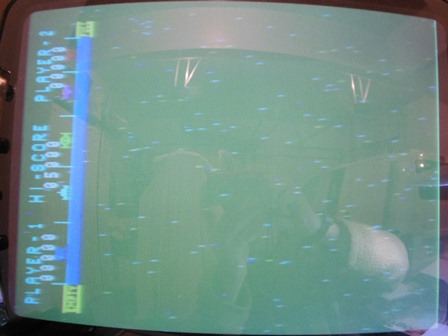
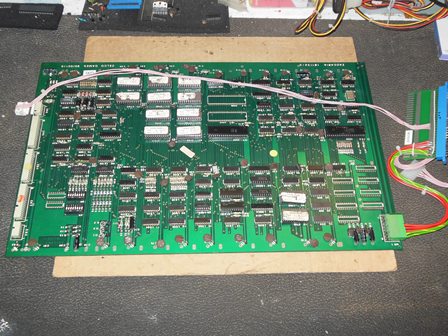
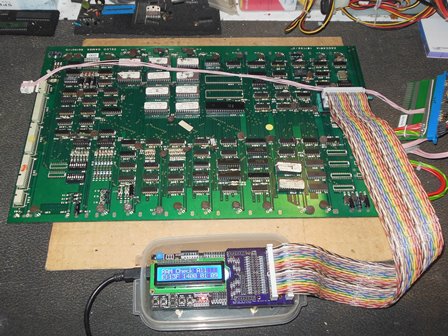
|
The game PCB booted to the score display with no visible attract mode. Attaching the Arduino ICT reported "E:13F 1400 01 09", flagging IC 13F (2112) as bad and all other ROM & RAM passed OK. Replacing IC 13F fixed the game.
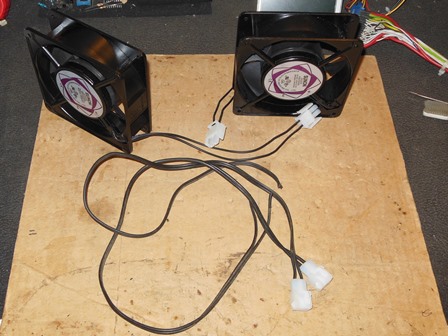
|
Three games in this style of cabinet, Astro Wars, Super Galaxian (Galaxia) and Sea Scare did not have interior fans that were used in later cabinets. All three had seen regular failures during the show so I decided to evaluate adding a temporary fan using a Sunon DP200A 220V fan, power cable and crocodile clips to attach to the transformer taps.

|
There weren't a lot of places to fit the fan. The final choice was on the coin box back board to the right of the monitor bracket to leave space to remove the monitor chassis. The power clips were attached between the 0V and 220V taps on the non-isolated input side of the power transformer, and the fan ran OK. Air flow was across the power regulator PCB, same as later cabinets, towards the game PCB. The game ran for several hours with no issues.